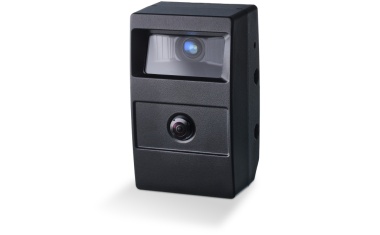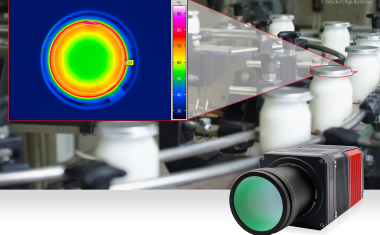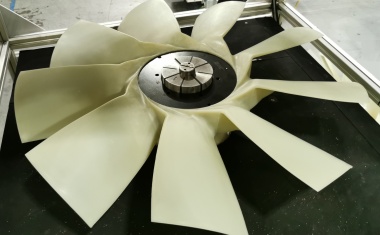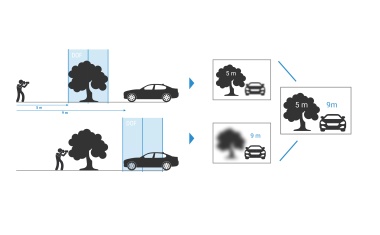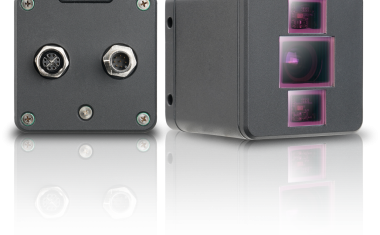Automatic Focus Adjustment
It is difficult to imagine microscopy in biotechnology or clinical and pharmaceutical research without automation technology. Many applications in industrial surface inspection also require appropriate solutions for sample handling and sample positioning because of the large amount of data and the desired throughput. Conventional stepper motors achieve the required speeds and have resolutions in the micron range, making them adequate as drives for sample scanning in the XY-direction. Motion along the optical axis, on the other hand, requires much higher resolutions and, at the same time, long settling times must be avoided. Piezo drives are thus able to offer far better fine adjustment for the focus. Moreover, they can be comparatively easily integrated into the application and a retrofit is also unproblematic in most cases.
There are now many applications in microscopy which require precise, dynamic adjustment of the sample along the optical axis. These include auto-focusing onto the topography of the surface, or data acquisition in different focal planes for the computer-aided representation of a three-dimensional structure. In all these cases, the important issue is to focus as quickly as possible with the maximum possible accuracy.
Advantage of Speed for Screening
Screening covers a broad spectrum of applications in microscopy. It denotes a systematic testing method used to identify samples with certain properties in pre-defined test ranges, and it usually involves a large number of samples. Typical applications can be found in biotechnology, medical diagnostics and pharmaceuticals. In screening, tissue or cell samples are exposed to an active substance and the changes are investigated as a function of the dosage applied and the exposure time. Speed is important not only for high throughput, but also to avoid sample deterioration during examination, such as when fluorescent tracers need to be irradiated. Furthermore, the handling process also requires high sample throughputs. This is another reason why it is desirable to focus as quickly as possible.
Physik Instrumente (PI) from Karlsruhe, Germany, offers a range of piezo drives especially for these applications (see text box); the drives can be flexibly and easily mounted on a microscope, either in addition to, or in place of, a conventional Z-axis motor-usually a stepper motor (fig. 2). The devices work by moving either the objective, the objective turret or the sample along the optical axis. Even if the first sample is in focus, the focal planes of the subsequent samples can be different from the first, either because of differences in fill level or because the respective sample holders are uneven. The focus must thus be readjusted for every sample, with minimal settling time, in order to guarantee the quality of the analysis. This task is performed by the piezo drive. The auto-focusing procedures for readjustment therefore no longer employ the slower stepper motor (if present at all) but only the piezo drive. With a maximum travel range of up to 500 µm, it adjusts the position to within a few nanometers in milliseconds.
Three-dimensional Imaging
These advantages of piezo drives can also be used for three-dimensional imaging. In confocal microscopy, virtual cross-sections through a tissue sample are made, elucidating its structure. This is accomplished by displacement of the focal plane, and also requires very precise movement of the imaging optics along the optical axis. Alternatively, the sample can be moved accordingly. Both methods have their advantages.
Pifoc objective Z-drives can be made very small and stiff. They thus exhibit short response times, and their precision guiding system achieves very accurate positioning, even when travel ranges are relatively large. Furthermore, when the objective is moved, motion-related disturbances of the sample can be ruled out. Appropriately designed, Pifoc Z-drives can move either individual objectives or the whole turret (fig. 3) depending upon the application requirements.
There are sometimes reasons for moving the sample rather than the objective, however. The most important is that in phase-contrast microscopy this method does not degrade the image quality. The compact size of piezo drives means they can often be integrated into the existing XY sample scanner (fig. 1). Models with vertical travel ranges from 0.1-0.5 mm fit, for example, onto Märzhäuser XY scanners (microscope accessories) without adaptors. It is therefore still possible to use all the usual sample holders for specimen slides right down to the multi-well plate. The complete XYZ system retains a low overall height, allowing it to be used with all current models of microscope. Integration and control of the piezo Z-stage is as simple as that of any classical positioner.







